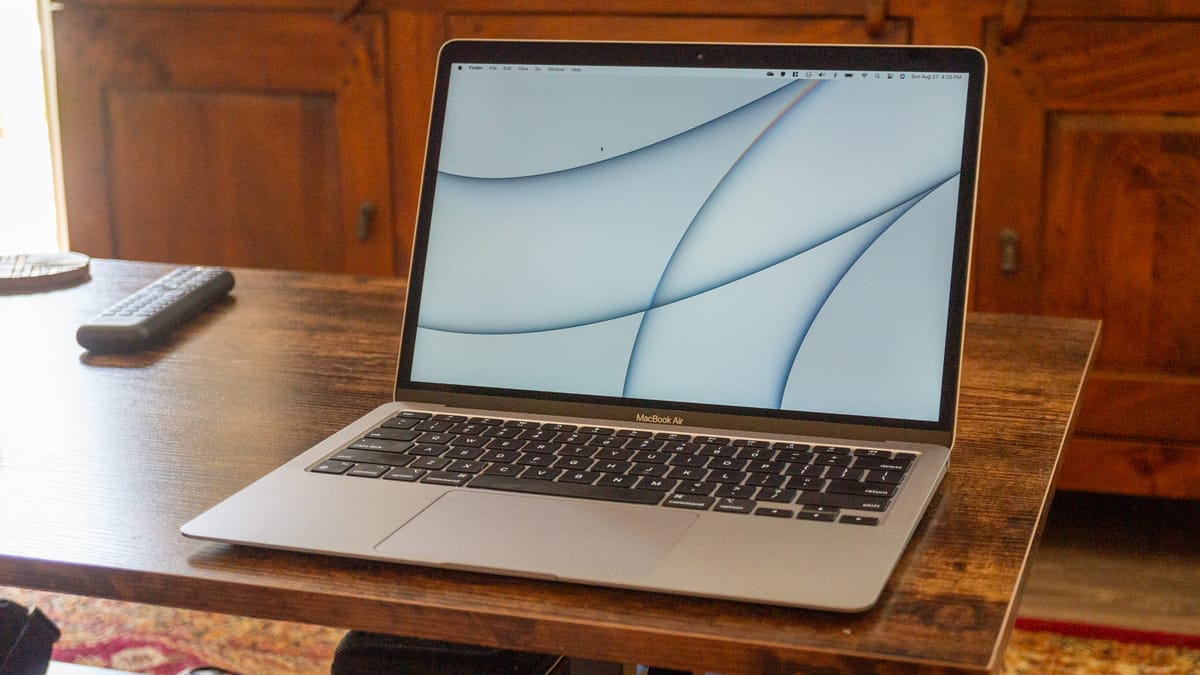The most exciting 2024 tech isn't AI
2024 might be the breakout year for efficient ARM chips in desktop and laptop PCs.

We've made it to 2024, and the tech industry is still laser-focused on artificial intelligence, just as it was for the entirety of 2023. There's going to be wave after wave of AI products and services over the next year, partially because it makes investors excited. There's potentially a much more interesting battle about to take place in 2024, though: a significant shift in the processors used in laptop and desktop computers.
For roughly the past three decades, the desktop and laptop computer industry has been dominated by Microsoft Windows and Intel x86-compatible processors. IBM, Apple, and Motorola created the PowerPC architecture in the 1990s as an alternative, which was eventually used in Mac computers, video game consoles like the Xbox 360 and Wii, and many embedded systems. However, Apple abandoned it in 2005 when it started switching Mac computers to Intel chips, and consoles started moving to x86-based processors. Intel tried to develop a replacement for the x86 architecture several times, including the Intel i860 and Itanium, which were all failures.
AMD's Ryzen processors have been giving Intel a run for its money over the past few years, but they're still based on the same decades-old x86 architecture. Every year, we've seen Intel and AMD spend billions of dollars on new designs to squeeze out single-digit percentage improvements in performance and efficiency. Most desktops and laptops with x86 chips still need active cooling, making the computers heavier, louder, and more power-hungry.
Intel's latest attempt to modernize the x86 architecture was revealed in December 2023: the mobile Intel Core Ultra chips, also known as "Meteor Lake." The new processors use a chiplet-based design, with specialized cores for high-performance tasks, power-efficient workloads, on-device AI, and connected hardware. Intel hyped up the new architecture, but reviews for the first wave of Meteor Lake laptops confirm what many expected: the chips are better, but not game changers. We still need something better than x86.
The up-and-coming architecture on the desktop is ARM, which has already been used on most phones, tablets, and embedded devices for decades. Early attempts at ARM-based desktop and laptop computers, like the Microsoft Surface and its Windows RT operating system, weren't successful. Tablets gradually became computer replacements for some people (a trend that sharply reversed in the COVID-19 pandemic), and most of those tablets had ARM chips, but that's not quite the same thing. Chromebooks with ARM processors, like the original Samsung Chromebook and ASUS Chromebook CM3, were noticeably slower than comparable Intel and AMD-powered laptops.
The turning point
Apple started switching its Mac computers from Intel to ARM-based "Apple Silicon" M1 chips in 2020, which felt like the true turning point for ARM on the desktop. For the first time ever, there were ARM-based computers comparable in performance to x86-based desktops and laptops, while still retaining ARM's power efficiency and always-on features. Apple's first M1 chips could match some of Intel's processors while using less than half the power. The company has followed up with newer M2 and M3 chips since then, which are continuing to boost performance while staying at roughly the same power efficiency.
I bought an M1 MacBook Air in 2022, and I was blown away at what Apple achieved. It was significantly faster than the Surface Laptop 4 that I had purchased a few months earlier, while also having no fan noise, because the M1 is so power efficient that it doesn't need active cooling. I sold my Surface Laptop 4 soon after that, and I switched to an M1 Mac Mini for my desktop computer.
Apple's hardware is impressive, but obviously Mac computers are not for everyone. I want to see Windows and Linux computers with powerful ARM processors too, but so far, the options have been limited. Qualcomm has developed a few chips for Windows ARM laptops, but the performance and battery life haven't been great. MediaTek said it was working on ARM chips for Windows PCs over two years ago, and nothing has materialized yet. In the Linux world, devices like the Raspberry Pi 5 and PineBook Pro are interesting, but nowhere near the performance level of a typical x86 computer or Apple Silicon Mac.
The year of ARM on the desktop
There are a few signs that we'll see high-performance ARM-based PCs in 2024. Reuters reported last year that both AMD and Nvidia are developing ARM processors for Windows PCs. Supposedly, an exclusivity deal has prevented any companies except Qualcomm from selling Windows-compatible ARM chips, and that deal expires in 2024.
I'm not sure about AMD's chances here, since the company hasn't released any ARM hardware in recent history (the K12 project was cancelled at some point), but I'm still interested. Nvidia is in a much stronger position to deliver fantastic chips: the company is currently a leader in desktop graphics and AI processing, and it already made the ARM chips used in the Nintendo Switch.
The initial report said Nvidia and AMD aren't expected to start selling PC chips until 2025, but timelines can change, or we might at least get official confirmation and some information this year.
Qualcomm announced its new ARM-based Snapdragon X chips last year, which are expected to start shipping in 2024. Unlike the company's earlier designs, these chips are supposed to be competitive with mid-range and high-end x86 chips and Apple Silicon. Early benchmarks indicate that multi-core CPU performance and graphics exceed some Intel and ARM Mac laptops, which is certainly a step up, but it's unclear if Qualcomm is maintaining a similar performance-per-watt as Apple's chips.

Windows on ARM has also been gradually improving over the past few years: it can now run many 32-bit and 64-bit x86 applications and games through a built-in emulation layer (like Rosetta 2 on Mac), and Microsoft has been rewriting more Windows components as 64-bit ARM code for faster performance. It's still not as polished as macOS on Apple Silicon, but it's getting there. I've used ARM Windows 11 through Parallels on my MacBook, and the compatibility layers are good enough that I can play x86 Windows games like Civilization VI and Fallout 3.
I'm excited
The rise of ARM chips on desktops and laptops is one of the most exciting developments in tech to me right now. The decades-old x86 architecture has been holding back PCs from many of the advantages of modern smartphones and tablets, and Apple has proven that it's possible to go beyond it. Now we're just waiting on the rest of the PC industry to catch up, potentially with more open and expandable hardware, which seems like is going to happen in 2024 and 2025.
ARM isn't the only game in town, either. The RISC-V architecture has been slowly gaining steam as an alternative to ARM, since it's a more open design with royalty-free licenses. Google, Intel, Qualcomm, Nvidia, Red Hat, Samsung, and other companies have joined the RISC-V Software Ecosystem Project. Qualcomm is currently developing a RISC-V chip for Wear OS smartwatches, but there's no release timeline yet. We're still far off from RISC-V showing up in mainstream desktop computers, if it ever happens, but there are single-board computers.
There's a lot to be pessimistic about in tech right now: AI-generated junk filling up web searches, Microsoft pushing millions of PCs to an early retirement, executives eager to replace human workers with AI solutions, and a lot more. The ongoing processor war might be different, though. It has the potential to significantly improve desktop computing and push past the performance-per-watt barrier that Intel and AMD have repeatedly failed to surpass. My MacBook feels like the future, and 2024 might be the year more people can try that future.




